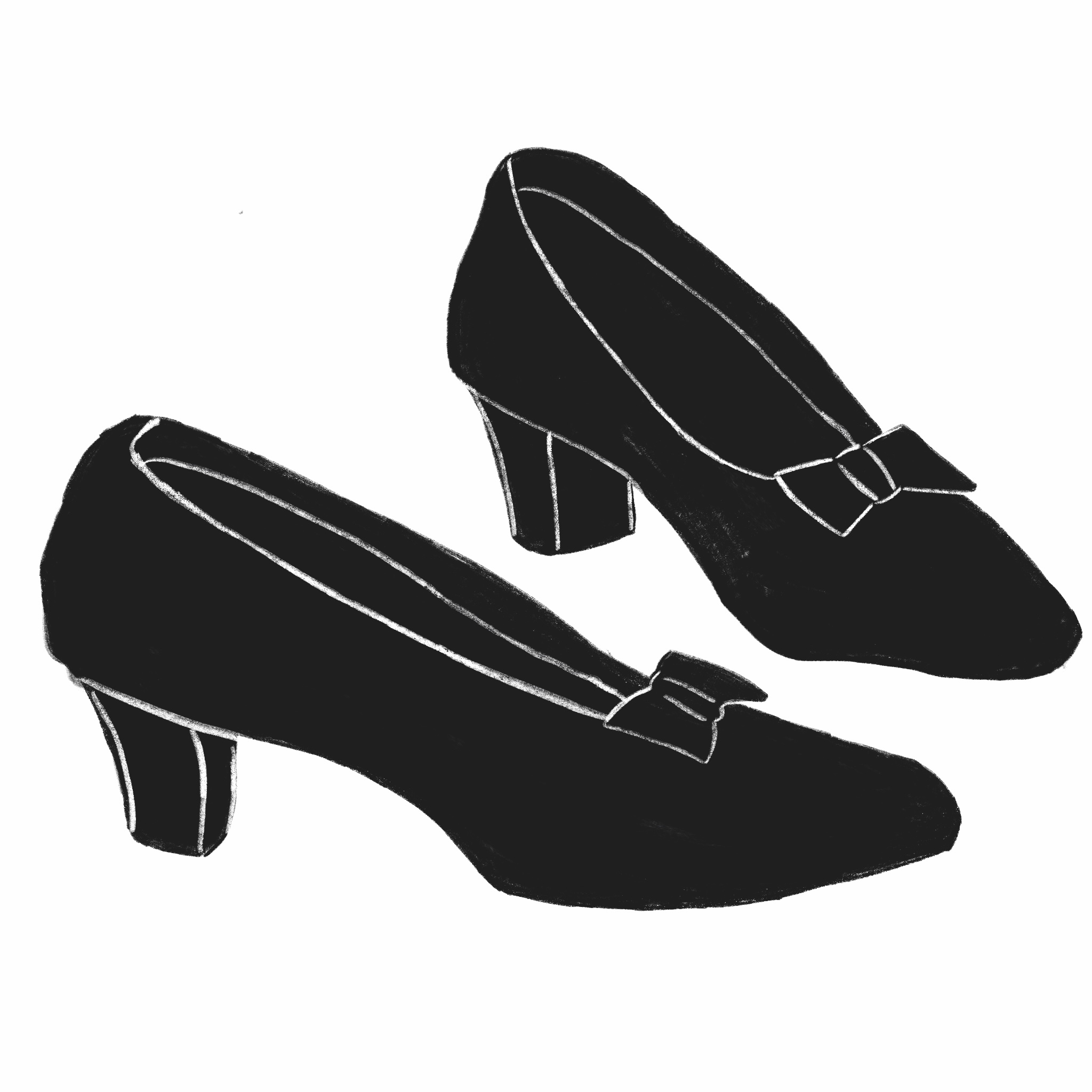Dorothy’s ruby slippers and other shoes that will take you places
February 21, 2025
 Henry Abbott
Henry AbbottIn “The Wizard of Oz” (1939), beneath a pair of pigtails and a blue gingham dress sat one of Hollywood’s most famous heels, graced by none other than Judy Garland. Dorothy’s most famous accessory (besides Toto), which sold for a whopping 28 million dollars at an auction in December, attesting to a longstanding human fascination with the shoe, or a lack thereof: Foot-binding practices, hypebeast sneaker culture, “crunchy” barefoot families on TikTok and more.
Besides protecting your feet from hot coals, frost and debris, shoes represent individual identity—socioeconomic status, hobbies, taste, ability—like any other accessory or article of clothing throughout history. For example, if you haven’t had someone motion at your shoes and yell, “What are those!?” did you even experience 2015? Touching on the human fascination with celebrity culture and Hollywood, the YouTube channel of the media company Complex even has its own series where public figures go sneaker shopping, paying homage to the hypebeast community the outlet was built upon. I would personally recommend it to anyone who is looking for inspiration from their personal style icons but is still too “macho” to be caught watching Vogue “Beauty Secrets” get-ready-with-me style videos.
A recent discussion I had that truly put the representation of personal identity through shoes into perspective occurred when southern classmates of mine shared their redefined relationship to cowboy boots since moving to New England. Our art history course, “The Thing,” seeks to analyze material culture, defined as all artifacts manipulated by human beings, including the “things” we wear.
When discussing the unspoken Bowdoin dress code, two of my classmates from Oklahoma and Texas shared that the commonplace leather shoe informing a heritage of homesteading was no longer a closet staple for them, citing outsider conflation of the boot with conservative values. Conversely, a student from Los Angeles shared she felt proud to wear her hot pink suede pair on campus.
Besides the recent cowboy boot trend in women’s fashion, this dynamic represents the ongoing historical United States conflict between a merchant, urban class and an agricultural, rural class. Leather boots—made from slaughtered, family-owned cattle—or their vegan counterparts, made using foreign labor and materials, both beg the question of which product, and thus lifestyle, is superior. One model embraces tradition while the other rejects it, whether through color, material or overall production process.
Moral of the story, shoutout to Professor Dana Byrd.
The shoes defining my upbringing were as follows: Skechers Twinkle Toes that were a bedazzled sensory heaven for a 5-year-old girl, a pair of pink Adidas Forum Low sneakers that I would lace with safety pins and letter beads in middle school, platform Doc Marten boots that I somehow lost in Chicago during my peak indie music period and my first pair of opanke gifted to me as I approached adulthood, a traditional Serbian curled peasant shoe.
You don’t always need a shoe to express yourself or experience literal or figurative mobility, though. The most liberating memories of my childhood were running around barefoot through my neighborhood meadow until dusk, making mud pies with my best friend. Dogs out.
Other people have disability aids, like bionic limbs, that can similarly tell stories about identity without being shaped entirely by a pair of kicks.
If you want to intentionally show who you are through footwear, there are several approaches to picking a pair of shoes reflecting your values.
For someone who wants to show values of wealth and fame through unique original physical form and content (like logos), they can splurge a grand on a pair of red-soled Christian Louboutin pumps or lightly stained Golden Goose sneakers.
Regarding simultaneous values of individuality and tradition, a classic, more affordable pair of shoes, like the Nike Air Force One, can be modified through additive or subtractive means: custom Etsy paintings, DIY engraving and homemade Cricut patches.
If you value sustainability or security, the manner in which shoes are worn is another purposeful decision beyond the initial appearance of your shoe. Try buying goods made from biodegradable animal or vegetable fibers, purchasing from an outlet-style or secondhand store or visiting a cobbler in your area for repairs.
Dorothy’s ruby slippers return her to Kansas, not because sequined red pumps are known to be particularly good for walking long distances but because they represent Dorothy’s values of courage, kindness and intelligence that she acquires from her friends. Her own faith in the common good is also a plus.
You deserve a pair of shoes you feel confident in. Next time you’re shopping for a new pair or looking at modifying an old set, maybe take a free values assessment online to weed out what’s most important to you and continue from there. When you look in the mirror, do the articles on your feet align with those ideas? Can they take you places?
This is the second pillar of “Stepping Stones for Style.”

Comments
Before submitting a comment, please review our comment policy. Some key points from the policy: